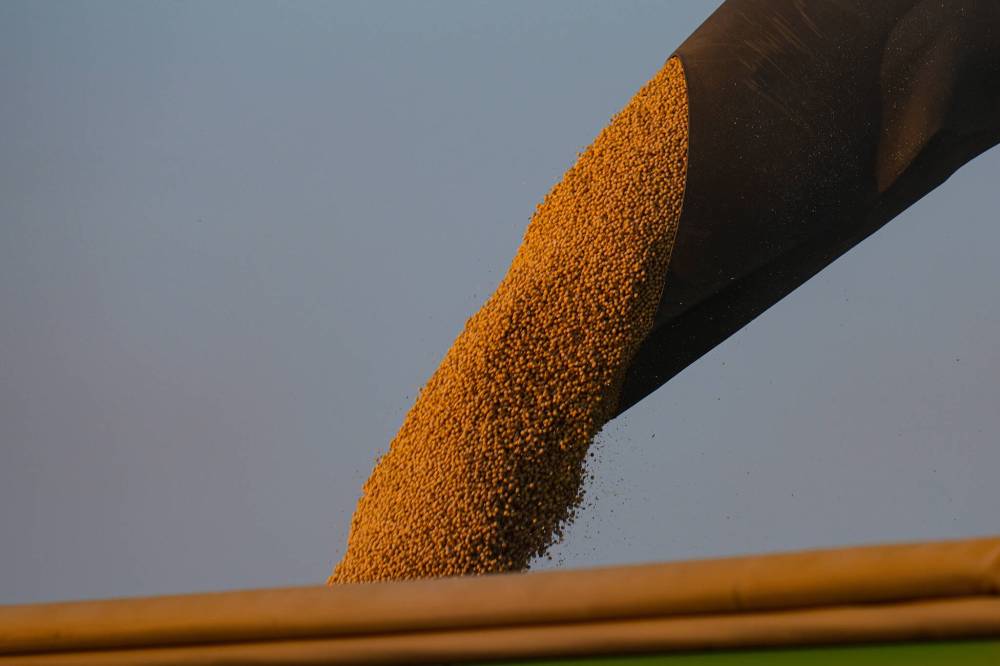Crop price only 1 piece of farmers’ marketing puzzle
Advertisement
Read this article for free:
or
Already have an account? Log in here »
To continue reading, please subscribe:
Monthly Digital Subscription
$1 per week for 24 weeks*
- Enjoy unlimited reading on winnipegfreepress.com
- Read the E-Edition, our digital replica newspaper
- Access News Break, our award-winning app
- Play interactive puzzles
*Billed as $4.00 plus GST every four weeks. After 24 weeks, price increases to the regular rate of $19.00 plus GST every four weeks. Offer available to new and qualified returning subscribers only. Cancel any time.
Monthly Digital Subscription
$4.75/week*
- Enjoy unlimited reading on winnipegfreepress.com
- Read the E-Edition, our digital replica newspaper
- Access News Break, our award-winning app
- Play interactive puzzles
*Billed as $19 plus GST every four weeks. Cancel any time.
To continue reading, please subscribe:
Add Free Press access to your Brandon Sun subscription for only an additional
$1 for the first 4 weeks*
*Your next subscription payment will increase by $1.00 and you will be charged $16.99 plus GST for four weeks. After four weeks, your payment will increase to $23.99 plus GST every four weeks.
Read unlimited articles for free today:
or
Already have an account? Log in here »
Economists who have studied how farmers market crops have more than once concluded their behaviour “deviates from the standard definition of rationality,” as one study framed it.
This is not to suggest farmers are irrational creatures. Rather, their complex operational matrix combined with human behaviour results in decisions that don’t mesh with classic economic theory on marketing.
How could it?

MICHAEL CONROY / THE ASSOCIATED PRESS FILES
Soybeans are harvested last month in Warren, Ind. China has yet to purchase any of the U.S. soybean crop this season.
Farmers are tasked with making “rational” decisions in a world gone crazy with tariff wars, supply chain disruptions, subsidy-induced surpluses and incalculable uncertainties due to escalating geopolitical tensions — all the while struggling to salvage the last of this year’s crop from muddy fields and getting those fields into shape for next year. They are also making critical decisions around purchasing seed and fertilizer for the next crop.
Plus, prices for all crops are in a slump and there are no rallies on the near horizon.
Granted, some farmers will have already priced at least a portion of their crop using the futures market or forward-pricing contracts with grain companies. Provided they have the volumes agreed to in the forward contract, it’s a way of spreading out the marketing risk and, hopefully, locking in a profit.
There are no clear statistics as to how many use these pricing tools, but it’s likely fewer than in 2021.
That’s when thousands of farmers got burned on such contracts after an intense drought drastically cut yields and grain prices soared. They either had to buy grain to deliver or buy back their contract at a higher price. Drought-like conditions were common across the Prairies this year, too.
Against this backdrop, Manitoba Agriculture invited a familiar face on the province’s grain marketing scene onto its weekly production-focused webinar to offer a fresh perspective on what to do with this year’s crop.
David Drozd, president and senior market analyst for AgChieve Corp., uses charting and technical analysis to identify past patterns and future trends in market direction. While he doesn’t ignore the fundamentals of supply and demand, Drozd has found his approach has rarely led him astray over the past four decades. Sometimes, both approaches point in the same direction. But if they don’t, he sticks to what his charts are telling him.
He has a simple explanation for why. “History repeats, and that’s because human nature doesn’t change,” he said.
“We believe that’s the best way to cut through the news, or the noise, as I may call it. There’s a lot of noise in the marketplace here for the last eight months.”
So, what are the charts telling him about where grain prices are headed based on what happened the last time U.S. President Donald Trump was in office?
The news isn’t good.
“The gist of this is that prices did not go up until his term ended,” Drozd said as he rolled through graph after graph of commodities and currency values — all of which are at or near the range they traded during the last Trump administration (2017-21).
However, Drozd reminded farmers that price — which is what sellers naturally focus on — is only one piece of their marketing puzzle.
“If you got good yields, and you look at today’s price and you sell the crop, are you getting near-record gross revenue?” he said. “Because the price isn’t coming, but if the gross revenue is there, don’t let it slip away. You will farm another day.”
What’s most likely to drive markets on the near horizon will be farmers’ need for cash flow, causing them to deliver into a market already burdened by lack of demand.
“China has not bought a single bushel of new crop U.S. soybeans yet,” Drozd said. “So, they’re not only not buying canola from Canada, but they’re also not buying soybeans from the U.S.”
He stressed the value of a marketing plan built on a solid understanding of what it takes to break even. “Really, that’s all that marketing is: managing risk and taking advantage of the opportunities that present themselves.”
As for what to grow in 2026: “The crop to grow is the one that your neighbours are not going to grow.”
Laura Rance is executive editor, production content lead for Glacier FarmMedia. She can be reached at lrance@farmmedia.com.

Laura Rance is editorial director at Farm Business Communications.
Our newsroom depends on a growing audience of readers to power our journalism. If you are not a paid reader, please consider becoming a subscriber.
Our newsroom depends on its audience of readers to power our journalism. Thank you for your support.

